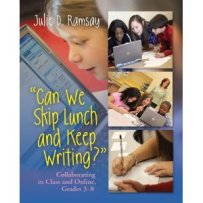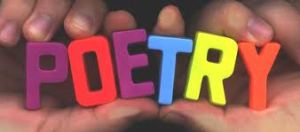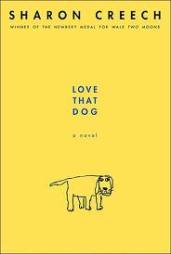After a long process I finally finished my memoir! Below are the final versions of my digital storytelling video and my memoir entitled The Day the Beach Played Rough.
Digital Storytelling of Memoir
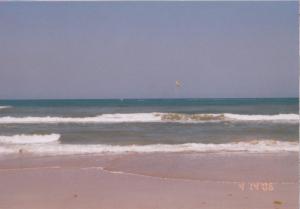
The Day The Beach Played Rough
Memories are a funny thing. Sometimes the moments in life you think will make the biggest memories actually turn out to be not so important. Sometimes it’s the little things, which may not seem so important at the time, that end up leaving us with lasting memories. Then there are those other times when a moment you never expected just kind of jumps up and grabs you, and you’re left with a memory you never intended to have. That’s what happened to my two sisters and me one day when we were at the beach. You know how people are always saying to try new things? Well in this case, maybe it wasn’t such a good idea.
It was a warm summer day just like any other. My family and I were in Daytona Beach, Florida, a place we had been vacationing every summer since before I can remember. By this time the beach was like an old friend. Of course, we had had our rough tumbles in the ocean, and I’d be lying if I said I had never been burnt a few times by the friendship. Nevertheless, I loved the beach, and the good times far outweighed the bad. On that day, however, the beach decided to play a little too rough with my sisters and me.
It all started when my younger sister Jenna saw something in a store that she desperately wanted: a skim board. Now to tell you the truth, I don’t know where this whole skim board interest came from. Being seven, Jenna was no tremendous sport fanatic, and I had never even heard of a skim board before. I personally think she just wanted it because it was pretty tie-dye colors, but being the baby of the family she got everything she wanted. My parents bought it for her, and that was one purchase they later regretted.
When we got back to the hotel, being young and naive, my sisters and I couldn’t wait to go down to the beach and master our new toy! The three of us got on our bathing suits, lathered up in suntan lotion, got our board, and headed to the ocean. My older sister, Heather, carried the skim board and got to try it first because “I’m the oldest,” she would say, which apparently in her eyes made her the queen of the world or something. I’ve got to admit that watching her awkwardly try to balance on this thing while the tiny waves knocked her over was a bit enjoyable.
We took turns trying to figure out how this skim board thing worked. We tried to go beside the waves, into the waves, and every way we could think of, but none of us could really get it moving. Then we realized that if we went to the very edge of the ocean with the shallowest water, we could skim just a little. The problem with our thinking was that we didn’t think. We never thought about what would happen when the water went back down. Well let me tell you, when the water goes back down the board stops dead in its tracks, which was something I was about to learn.
It was my turn, and I was ready this time. I saw the wave coming, felt the sand under my feet, and grasped the board tight in my hands. I threw the board and it left my hands with the power of a rocket. I quickly followed it and matched my stride to its speed. Then I jumped on. For a split second I was on top of the world. I was doing it! I was riding the wave like a champion! Then something happened so fast I didn’t even know what had happened. One second I was on the board, and the next I was on the ground. Before I even had a chance to open my eyes I could hear my sisters running over.
“That was AWESOME!!!” they yelled.
It sure didn’t feel awesome. I was flat on the ground, and had landed with the board under my hip.
“Christa, you did like two complete flips in the air!” Heather informed me.
At this point I was still lying there dumbfounded. The sand was hard, and my hip really hurt. I looked down and saw blood gushing from my leg. All the skin on my hip was completely gone, and I started freaking out. I jumped up and didn’t know what to do so I started to cry. Heather told me to go run in the ocean to clean it out. In complete hysteria, I listened. If you don’t know, salt water really stings an open wound. Especially one that is the size of a watermelon, at least that’s how big it seemed to me. As quickly as I had run in there I ran back out.
My sisters helped me back up to the room, and my parents were stunned at the commotion of us coming through the door. We had only been gone a half hour at the most. My dad ran over to the drug store and got me some major Band-Aids. They were the biggest Band-Aid I had ever seen, and they were uncomfortable. They were however, waterproof so after I had composed myself, I was able to go back down to the beach. One thing was for certain, I was not getting back on that thing again!
To this day I still don’t know why my parents didn’t take away the skim board at that point. I thought my leg was a pretty good reason never to ride that thing again, but my sisters apparently weren’t as scarred by my experience as I was. So I laid on my warm soft towel on the sand and watched them make fools of themselves on that board. I watched them stumble and fall, it was actually quite entertaining. It was like I had a front row seat to a very impressive comedy show.
Then I saw Heather try to catch a big one. It happened fast, but it looked like slow motion. The board stopped in the sand, but Heather was still moving. Her feet went up into the air, and she came straight down on the board right on her behind. It looked like it hurt! She got up eventually and hobbled around for a while. Then it was Jenna’s turn. I watched as the same thing happened to her, but this time she came down hard on her elbow. My mom, who was sitting beside me finally decided enough was enough. She got up and took the board away, however it was too late.
Later that night Heather couldn’t sit down at all. I thought it was kind of funny to be honest. My mom said she probably bruised her tailbone. The real problem as Jenna though. She held her arm like it was in a cast. She wouldn’t move it for anything. The next day my parents took her to the hospital and as it turned out a cast was just what she needed. She had broken her elbow when she fell down that last time. That night was the last time we ever saw that skim board. My dad took it out to the dumpster, and none of us ever rode on another skim board again.
The beach had not been such a good friend that day. It took a while for my leg to stop leaking out this icky fluid from my watermelon-sized “strawberry,” as my dad called it. Heather ended up getting a pillow to help her bruised bottom not hurt so much to sit on. And poor Jenna was stuck in a cast for weeks. Eventually our scrapes, bruises, and breaks healed though. The beach and I mended our friendship the next summer when we visited again. Looking back I really don’t know if it was such a good idea for us to try out skim boarding. It may not have turned out well for any of us, but it was a very memorable experience for each of us. Memories are funny that way. I don’t necessarily remember all the great times we’ve had at the beach, though there have been lots. This particular memory was one of those that, even if you don’t want it to, jumps up and grabs you, or in this case knocks you down pretty hard.
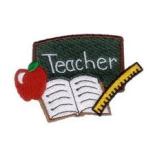 During my professional sequence II experience I have become very well acquainted with a little thing called a unit plan. I not only have to write one, but I have to write three. I have to write one for social studies, one for science, and one for language arts. Each unit plan must be done according to the IUP Unit Plan Format, and it must be done well.
During my professional sequence II experience I have become very well acquainted with a little thing called a unit plan. I not only have to write one, but I have to write three. I have to write one for social studies, one for science, and one for language arts. Each unit plan must be done according to the IUP Unit Plan Format, and it must be done well. add two more on top of that and you start to feel like you’re barely treading water. I like to think however, that after my experiences doing all of these I will become much better at it, and be more prepared for my future as a teacher.
add two more on top of that and you start to feel like you’re barely treading water. I like to think however, that after my experiences doing all of these I will become much better at it, and be more prepared for my future as a teacher.  I think it’s much better to think of the unit in terms of your students. Instead of thinking of them on projects to be graded on, it is better to think of them as real lessons. How could I organize this information to make sense to my students, and what is the best way to help them learn? These are the most important questions! These are the questions that I need to ask myself in order to write a good unit plan… or in my case three!
I think it’s much better to think of the unit in terms of your students. Instead of thinking of them on projects to be graded on, it is better to think of them as real lessons. How could I organize this information to make sense to my students, and what is the best way to help them learn? These are the most important questions! These are the questions that I need to ask myself in order to write a good unit plan… or in my case three!









